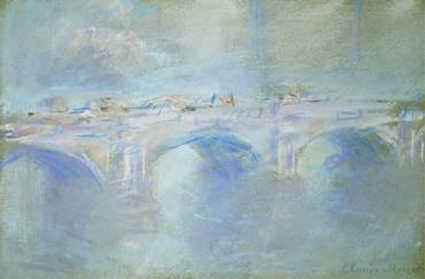Oscar Claude Monet has certainly proved to be the most marketable of the Impressionists. Multiplied in reproduction, his work decorates posters, coffee-table books, plates, coasters, pincushions and paperweights. The range of Monet-inspired consumer durables is truly formidable, so much so that at the Musee Marmottan, Paris’s principal Monet museum, it is even possible to buy a special-edition cast-iron replica of the easel he left in his studio at Giverny on his death, just two centimetres high, complete with pastiche waterlily painting – a potent symbol, if one were needed, of how an artist can be diminished by his own huge commercial popularity.
Despite the crowds who flock to see his works, it might plausibly be argued that Monet has become a curiously neglected figure. He is one of the world’s most famous painters, but also one of the most persistently misunderstood. He is sold as the quintessentially nice artist, a man who painted ever-so-pretty pictures of ever-so-pretty things, like picnics and poppyfields. But that is a view which almost completely obscures his true achievement.
Monet lived to the age of 86, and his lifetime spanned a period of great change. When he was born, in 1840,


